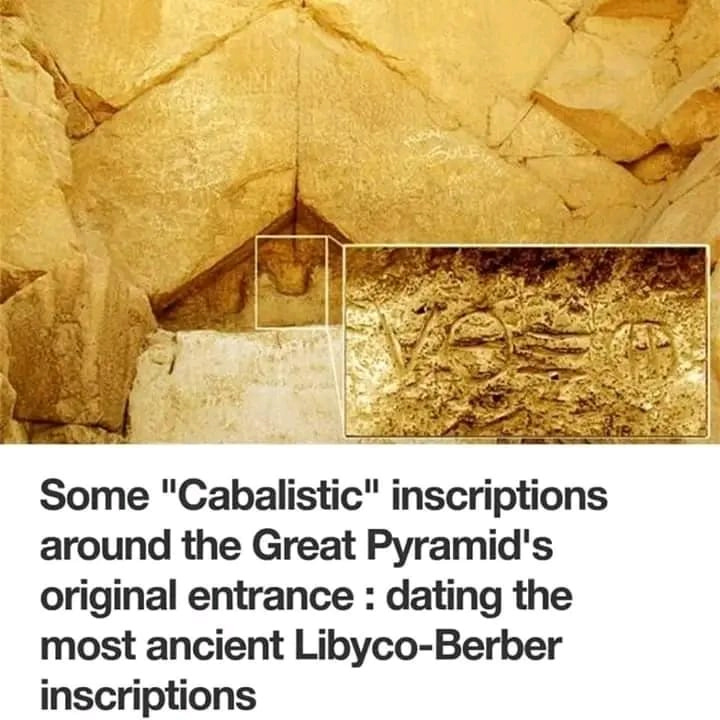Ancient Berber Libo inscriptions above the entrance to the Great Pyramid of Giza

In 1986, an American research team discovered ancient Berber Lebo writings above the entrance to the Great Pyramid of Giza (picture below), which date back to the second millennium BC or more, that is, several centuries before the appearance of the Phoenician alphabet.
As we mentioned, another research team discovered in 1994 in the Egyptian Western Desert near the borders of the state of Libya
These two discoveries are documented, as revealed by the Libyan researcher Ibrahim Shawqi Muammar, and there is even a detailed scientific article on the subject by researcher Giancarlo Negro published in the scientific magazine Sahara: prehistory and history of the sahara, issue 13, year 2001-2002, pages 148-165.
Italian researcher and archaeologist, Giancarlo Negro, discovers an inscription of Libo written in the ancient Libo-Berber script at the entrance to the Great Pyramid.
The only writing and scribblings discovered in the pyramid were neither hieroglyphics, drawings, nor anything else.
The conclusion was by emphasizing the impossibility of claiming that the “Libraber-Tifinagh” script is a Phoenician script. Being present in North Africa many centuries before the appearance of the Phoenicians.
The [Libyan_Lobi] script is the origin of subsequent alphabets in the region and not the other way around.
Source/Book: Rock Art Studies - News of the World Volume 3. By Natalie R. Franklin, Matthias Strecker

